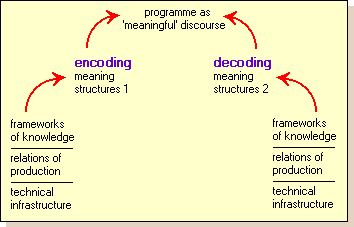Decoding ‘The Media and Me’ (Book Review)
As a professionally trained historian, it’s important for me to introduce my review of The Media and Me: A Guide to Critical Media Literacy for Young People with commentary and analysis on the Philip L. Graham quote: “News is the first rough draft of history.” Graham, former president and publisher of the Washington Post, was reported to have made this claim in 1963, and it has been memorialized as an evocation of journalists’ front line role in the production of history. The quote has been cited as a way to appreciate journalists as the first to document the people, places, and things that matter to the history of a given society – as providing evidence of happenings and a lens through which to view them.
I chafe when I read Graham’s quote. I first learned of the truism in graduate school, when it became clear to me that newspaper articles were problematic primary sources for any study. While it is true that news reporters are often first onsite and provide important information to students of the then and now, writing a ‘first rough draft’ of history involves far more than one witness’s account, even when other people of import are cited in the story. A draft of history creates the context and broader narrative within which a newspaper story lives. Furthermore, the news purports objectivity, but after comparing articles on the same topic from different sources, an historian can glean the biases, slants, and inaccuracies in onsite reporting. Finding the most accurate account becomes as impossible as finding the truth about the past. All we historians can do with the news is report on what we’ve found, highlighting the inconsistencies from one to the next, and explaining why we believe one source is more relevant than another in our study.
Becoming a ‘media citizen’
The Media and Me, published in late 2022 by Seven Stories Press.
As it turns out, I have been practicing critical media literacy since graduate school. This term, however, comes to me by way of an important book, The Media and Me, authored by Project Censored and the Media Revolution Collective. As the book’s glossary explains, a critically media-literate citizen is “a person who accesses, analyzes, evaluates, creates, and acts with media to empower their life and the lives of those around them” (p. 213).
This definition interpellated me as a “media citizen,” someone who “can reflect on how [I] use media in order to evaluate who is using whom” (p. 190). In graduate school, that is, I was accessing, analyzing, and evaluating historical newspapers to create stories about the past that came as close to the ‘truth’ as I could make them.
Fast forward twenty years, I find myself creating media stories as a writer for Weave News and other independent media outlets. It was, in fact, as a citizen journalist that I turned to The Media and Me as an introduction to the field of journalism. When I did so, I found a wealth of information with which I could act as an ethical content creator.
Digging into the gears of the media ‘clock’
Before returning to my admittedly biased commentary on journalism, let me offer a guided tour through The Media and Me. The book operates on a rather apropos metaphor. From the introduction through Chapter 8, the authors represent the US media (i.e., “the powerful institutions [in the US] that control [channels of communication] and our access to them”) as a clock (p.221). While it may appear clear that a clock tells time, the authors challenge readers to think more critically about how time is represented on the clock and to analyze the mechanisms that lie behind the clock and make it tick. The book begins, therefore, by defining foundational concepts – the clock gears – like media, critical thinking, critical media literacy, and representation. Whether you’re young in age or just new to media studies, these first five chapters provide a thorough yet accessible elucidation of the ideas which inform media critique.
Stuart Hall’s famous diagram of how communication works through complex processes of ‘encoding’ and ‘decoding’.
One of the key theoretical bases of the book derives from sociologist Stuart Hall, a key figure in the fields of media and cultural studies who proposed the “encoding-decoding model” (p. 32) for understanding communication. In short, content creators ‘encode’ their content with messages intended for audiences to interpret, but in the ‘decoding’ of this content, individual audience members bring their own life experiences and perspectives to bear. It is the active engagement of the audience with the texts and their messages which makes critical media literacy an essential skill.
Media content creators are experts at making texts which provoke feelings in media consumers, who themselves “have a dual ability to know something is not real and yet still have a very authentic, visceral reaction to the content” (p. 182). In other words, audiences can suspend disbelief to feel what a text says to them, even if the information is flawed. Since the accuracy of the content is not guaranteed, it is incumbent on the media consumer to ask further questions about what they see, hear, and feel in the media before acting on the information they receive. At its core, critical media literacy is about asking questions about the media and their products, precisely because the channels of communication seek to make you feel like consumers of their information.
Media as political-economic power
In chapters 6-7, the authors offer readers an opportunity to understand the battery which sets the clock gears in motion: political economy. News production is, in fact, big business. Corporations that buy news companies can, to a degree, control the stories that media consumers witness, and with this power, they can also attempt to shape how the audience feels and trigger them to act in ways that profit corporate owners.
In the 21st century, profit motives have caused “mainstream media” to come under the control of only a handful of owners and to align themselves with dominant political ideologies. This is how, for example, US media consumers recognize Fox News and the New York Post as media arms for the Republican Party and, conversely, The New York Times and the Washington Post as media arms of the Democratic Party. Without critical media literacy, we as media consumers might easily find ourselves in echo chambers, unquestioningly accepting the slant of mainstream media outlets because they make us feel as if their perspectives are objectively true.
Advertising and the ‘metaverse’
For me, the most disconcerting development in media is the rise of what fiction writer Neal Stephenson called the “metaverse.” The Media and Me defines the metaverse as “a virtual world, characterized by immersive online experience using augmented reality and virtual reality, in which people work, play, and socialize” (p. 221). One of the prime engines of the metaverse currently is social media. Hidden in plain sight is the profit motive behind social media. It is, in fact, free for media consumers to join powerful platforms like Tik Tok, Instagram, and Facebook. Commercial advertisers foot the operation’s bills, receiving massive amounts of consumer data in return for their investment.
Advertising includes “media messages intended to inform audiences about a product, service, or cause, with the ultimate aim of convincing audience members that they need to buy those products and services, or to invest in those causes” (p. 145). In-depth research must be done to understand how impactful commercial ads are to the casual user on a social platform. But if you consider the active decoding that users are doing, the amount of time spent scrolling on a platform, and the immersive experience one might create for herself, then it stands to reason that a significant portion of our real-world behavior falls under the control of corporate interest through digital media content.
Redrafting history
“What do you want to do?” asks the final chapter of The Media and Me. The answer for me is to ask more questions of the media I consume. That’s exactly what I did to start this review. “With all the fraudulent reporting that can happen in the media,” I asked myself, “why would anyone think news is the ‘first rough draft’ of history?” I found an uplifting answer. I wasn’t the only one who questioned the veracity of Philip L. Graham’s truism.
In 2010, writer Jack Shafer wrote a column for Slate, a daily magazine founded in 1996 to provide news analysis and commentary, questioning whether Graham was actually the first to call news the ‘first rough draft’ of history. With the help of other newspaper editors and media historians, Shafer discovered that Alan Barth, a soon-to-be-writer for the Washington Post, wrote a book review in 1943 for the New Republic in which he explained “News is only the first rough draft of history.” Barth would join the Washington Post in 1943, and so the hallowed quote reappeared in an unsigned editorial on October 16, 1944: “Newspapers, after all, are the first drafts of history, or pretend they are.” These historical fragments prompted Shafer to claim that “the notion of journalism as a ‘first history’ had real velocity in the 1940s Washington” and that Alan Barth may be the one who “gave [the quote] its boost”.
Why would Philip L. Graham, therefore, tacitly take credit for a quote that can be traced to someone else? By answering this question, Shafer revealed what a professional journalist, and media citizens like me, must do. S/he must ask questions, check facts, and seek accuracy when creating news, even at the risk of being wrong themselves.
For example, Shafer admitted that he attributed the quote to Graham because he found it in an autobiography by Philip Graham’s widow, Katharine Graham, published in 1997. In the book, Personal History, Katharine Graham reproduced three paragraphs from a speech her late husband delivered in London in 1963. In this speech excerpt, Philip L. Graham says: “So let us today drudge on about our inescapably impossible task of providing every week a first rough draft of history that will never be completed about a world we can never really understand.” Shafer had no reason to doubt his attribution until Barry Popik, an etymologist (read: historian of words and linguistic forms), sent him the book review by Alan Barth. This new evidence prompted Shafer to check his facts and revise his ‘first rough draft’.
Why critical media literacy matters
Now, I should note that Shafer charmed me quite a bit in his revisionist take on Philip L. Graham. He made an astute observation about historians:
What makes “first rough draft of history” so tuneful, at least to the ears of journalists? Well, it flatters them. Journalists hope that one day a historian will uncover their dusty work and celebrate their genius. But that almost never happens. Historians tend to view journalism as unreliable and tend to be dismissive of our work. They’d rather work from primary sources—official documents, photographs, interviews, and the like—rather than from our clips.
This admission by a journalist gave me the additional confidence I needed to trust his critical media literacy. I happen to know a few people for whom this is an accurate take on what historians think about the news.
More importantly, however, Shafer’s willingness to question his sources, to cast doubt on his own practice, to collaborate with other experts, and to identify a more accurate origin to information that few people question – these are skills that I value and trust. Thanks to the authors of The Media and Me, they are also skills that I see as critical media literacy in motion, providing a relevant model of content creation and revision which I can use in my own journey as a critically media-literate citizen.




